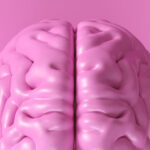### Investigating the Future Impact of Interdisciplinary Research on Alzheimer’s Breakthroughs
Alzheimer’s disease is a complex condition that affects millions of people worldwide. Despite its prevalence, there is still no cure for Alzheimer’s, and current treatments only manage its symptoms. However, recent advancements in interdisciplinary research are bringing new hope for better understanding and treatment of the disease.
#### Combining Math and Biology to Decode Alzheimer’s
One exciting area of research involves combining mathematics and biology to study the role of microglia in neurodegeneration. Microglia are immune cells in the brain that help regulate development and fight infections. However, when these cells behave abnormally, they can contribute to neurodegenerative diseases like Alzheimer’s. Researchers are using agent-based models to simulate the interactions between microglia and their environment. These models allow scientists to explore how changes such as temperature or energy sources impact cell behavior and how different cell types interact with each other[2].
#### AI in Alzheimer’s Caregiving
Another significant development is the use of artificial intelligence (AI) in caregiving for Alzheimer’s patients. Researchers have created a tool called ADQueryAid, which provides targeted, empathetic guidance to caregivers. This tool has shown significant improvements in usability and user satisfaction. The team plans to expand its capabilities by incorporating a broader range of caregiving needs and co-existing conditions. They also aim to explore voice and video interfaces for easier interactions and conduct long-term studies to assess the sustained impact on caregiver well-being and patient outcomes[1].
#### Advanced Diagnostic Tools
Advances in medical imaging and machine learning are also transforming the diagnosis and prognosis of Alzheimer’s disease. Researchers are using positron emission tomography (PET) and magnetic resonance imaging (MRI) to identify amyloid plaques in the brain and provide detailed images of brain structure. By combining these technologies with AI, scientists can improve classification accuracy and develop predictive models that integrate MRI radiomic features and plasma biomarkers[4].
#### Interdisciplinary Conferences and Collaborations
Interdisciplinary conferences and collaborations are crucial for bridging the gap between laboratory discoveries and real-world patient care. For instance, a recent conference in Chhattisgarh brought together biochemists and scientists to discuss the latest advancements in disease treatment, including promising research into identifying targets for Alzheimer’s treatment. These discussions aim to transform healthcare by ensuring that everyone, regardless of background, has access to the best possible care[3].
#### Future Directions
The future of Alzheimer’s research is promising due to the convergence of various disciplines. By augmenting existing longitudinal cohort studies with new phenotypic information, including biomarkers, neuroimaging, and digital data, researchers can gain a deeper understanding of the disease’s trajectory. Additionally, incorporating genetically well-characterized cohorts and harmonizing dementia assessment methods will provide valuable insights into the role of environmental and occupational factors in the development and progression of Alzheimer’s[5].
In conclusion, interdisciplinary research is revolutionizing our understanding and treatment of Alzheimer’s disease. By combining mathematical models with biological studies, leveraging AI in caregiving, and advancing diagnostic tools, scientists are making significant strides towards a future where Alzheimer’s is better managed and potentially cured. The collaborative efforts and innovative approaches being explored today offer new hope for those affected by this devastating condition.



